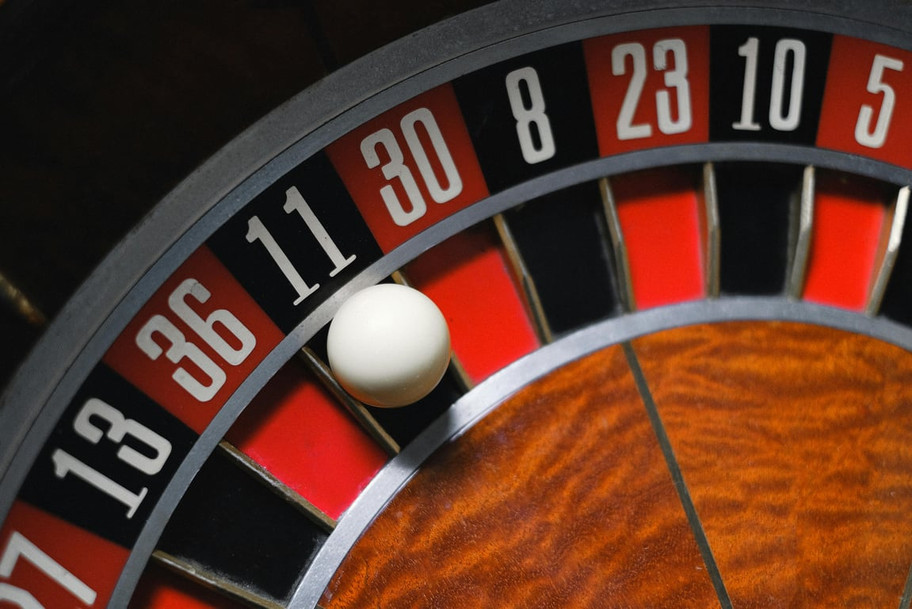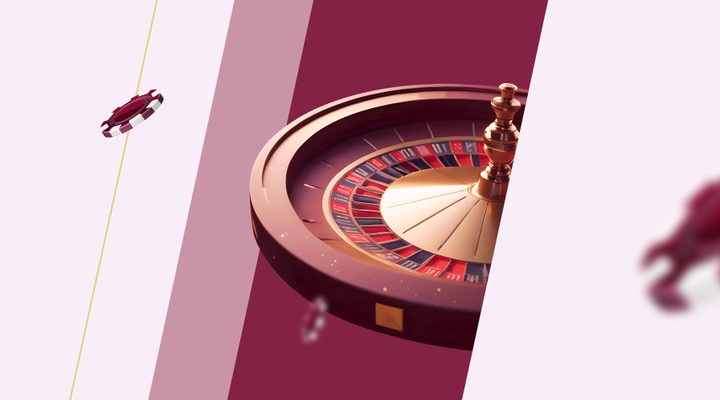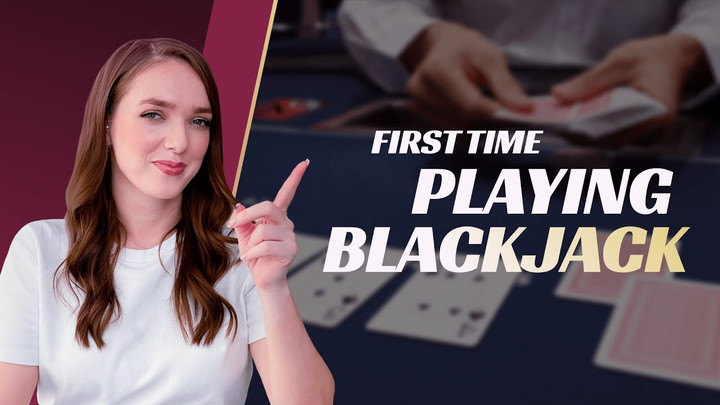How to play roulette

Roulette was one of the first ever casino games, as it was invented by Blaise Pascal (a French physicist) more than three centuries ago. The original roulette wheel Pascal invented (in the search for a perpetual motion machine) was the basis for this popular game.
In the early days of the 19th century, Francois and Lois Blanc adjusted the wheel to include a zero, which became a staple of the design. Today, roulette is one of the most popular casino table games, but in order to play you must understand the rules - this is where we come in. So before choosing from the best online roulette sites to play, read this guide so you can play roulette like a pro.
WATCH:
Roulette 101: Understanding the basics
Roulette is a straightforward game for the most part. It features a wheel with numbered coloured pockets, which is then spun, followed by a ball dropped in, which will eventually land in a coloured pocket. All you have to do is bet on which pocket or colour you think the ball will land in before the wheel stops.
However, if you don’t know the rules and terminology, it can look overwhelming when you first start betting. That is why we examine each part of this game to provide a better understanding of how it works.
Also, if you're wondering whether online roulette is rigged, rest assured. As long as you're playing at a casino that is licensed by the UK Gambling Commission, you're perfectly safe.
Types of roulette games
The three primary types of roulette available at casinos are:
- European roulette: The European version has a wheel with one zero pocket, so 37 numbers are in play.
- American roulette: The American version has two zero pockets (the 0 and the 00), so it has 38 pockets in play.
- French roulette: The French version uses the European wheel but has unique bets. These include ‘racetrack’ bets, ‘en prison’, and ‘la partage’.
Understanding the roulette table layout
Table layouts have some similar design elements. First, a grid with the 37/38 roulette numbers will mark the ‘inside’ bets. The outside part of the design will mark ‘outside’ bets, with ‘even money’ wagers, ‘column’ bets, and other choices available.
The European and American table layouts are largely the same, with only an additional zero block added to the top of the number columns/grid. French roulette also looks similar but has outside bets placed around numbers, rather than under them, and it’s, unsurprisingly, in French.
Roulette terminology
To start, we will cover some core terms every roulette player should know. We will also explain related terminology, as we go into further detail on how to play the roulette game in later sections.
| Term | Definition |
| Action | The sum of all the bets placed in a session. |
| All-in | When a player places all of their money on one wager. |
| Bankroll | The monetary budget you use to play roulette. |
| Bet on the layout | Any bet you place on the table layout’s numbered portion. |
| Chips | The small discs you use to place bets, with each equal to a different monetary value. |
| Croupier | The name of the person who spins the wheel. |
| Double zero | The extra green zero pocket that American roulette has. |
| Even money bet | An outside wager that pays out the same amount of money that you put down. |
| House edge | The amount of money from bets, shown as a percentage, that a casino makes from a table game over time. |
| Marker/dolly | An item/object the croupier places on the winning number, with players not being able to bet until it is removed from the table. |
| Odds | The probability of a specific outcome. |
| Pockets | The small slots on a wheel (that the ball falls into) numbered one to 36, altering between red and black and with the zero slot(s) being green. |
| RTP | The theoretical ‘return to player’ (RTP) percentage shows how much a game is expected to pay out in its lifetime. Learn more in our guide to RTP. |
| Table layout | The table layout you use to bet, with three main types (American, European, and French) available. |
Types of bets to place
Roulette wagers have two categories: inside bets and outside bets. Below, we look at a few of these wagers.
Inside Bets:
- Straight up (35x payout): Bet on a single number.
- Split (17x): Bet on two neighbouring numbers.
- Street (11x): Wager on three numbers in a line.
- Corners (8x): Place your stake on four connected numbers.
- Six-line (5x): Bet on two street lines.
Outside Bets:
- Column (2x): Wager on one of the columns, which contains 12 numbers.
- Dozen (2x): Bet on one of the sequences of 12 numbers (one-12, 13-24, or 25-36).
- Odd/even (1x): Place a stake that an odd or even number will win.
- Red/black (1x): Wager that the ball will fall in a red/black pocket.
- Low/high (1x): Bet that the ball will fall low (one-18) or high (19-36).
When betting on a French wheel, you can also add two additional features to your wagers:
- La partage: Get back half your bet if the ball lands on zero.
- En prison: Same as above, but with the option to keep half of your bet in play.
RTP, house edge and volatility in roulette
The RTP and house edge are two sides of the same coin, as they both relate to the percentage of 100%. For example: if we take European roulette, which has a 2.7% house edge, then the RTP would be 97.3%.
However, these are only theoretical percentages that affect millions of spins; players can’t expect to win exactly 97.3% of what they bet, nor does it mean that the casino will take 2.7% of every bet in every game. Instead, it helps players understand the advantage the casino (the house) has over roulette bets. Underneath, we have listed the average house edge and RTP for the different types of roulette:
- European roulette: 2.7% (97.3% RTP).
- American roulette: 5.25% (94.75% RTP).
- French roulette: 1.35% on even money bets (98.65% RTP) and 2.7% on other bets (97.3% RTP).
Volatility is another statistic you may come across, and it refers to the frequency of wins while playing (low, medium, high). It is important to note that this does not apply to online casino ‘live dealer’ roulette, nor offline roulette. It only relates to ‘online roulette’, where you play against the computer/software.
Step-by-step guide on how to play roulette
Now that you know more about the game, it is time to look at how to play the roulette wheel game online - our expert guide will help get you started:
- Sign up at a reliable online casino or log into your casino account.
- Make your first deposit, claiming any offers you are interested in.
- Search for the roulette games in the table games or live casino lobbies.
- Choose one of the games; we recommend European roulette for beginners.
- Decide on a chip denomination that your bankroll can comfortably support.
- Place the chips on the squares that match the bet you want to make.
- Wait for the ball to land in a pocket and see if your chosen bet won!
Land-based and online roulette etiquette
When looking at how to play roulette, there is etiquette you should keep in mind. Land-based games have more etiquette than online games, simply because you are interacting with other people directly:
- Convert your cash to chips before approaching the table.
- Tip your croupiers once every tenth spin or so.
- Don’t hand money to the croupier; only bet using your chips.
- Only place bets after the croupier removes the dolly (a clear marker placed on the winning number) from the table.
- Stop placing bets once the croupier says, “no more bets”.
- Don’t take up much room at a table if you’re not actively playing.
- Never argue with the dealer or other players.
- Don’t place food or drinks on the felt of the table.
- Avoid touching other players’ chips.
Online games have less etiquette, mostly because they work on strict betting round times. However, if you are playing online live games, then you have to stay courteous in the chat at all times.
Strategies and tips for roulette beginners
A few basic tips to help you in your roulette journey are:
- Make sure to understand the game rules.
- Diversify inside bets, as no two spins are the same.
- Don’t bet more than your bankroll can handle.
- Stick to odd/even, red/black bets until you feel comfortable with the game.
- Always play with the goal of having fun.
Besides the above tips, there are also several roulette betting strategies you can try. However, note that no strategy will guarantee a win.
James Bond roulette strategy
This strategy requires a decent bankroll. You must make multiple bets in a single spin, splitting a significant stake, like £300, into three wagers. The bets you make are the following:
- 70% of your stake on a high bet.
- 25% on the block 13-18.
- 5% on the zero.
With this strategy, you will only lose if the ball lands on a number between one and 12.
Martingale roulette strategy
The Martingale strategy aims to win back everything you have lost, but is a very risky tactic. Each time you lose a wager, you must double your stake. Theoretically, if you then win, it means you get back all the money you lost, then reset your bet to the starting amount.
However, your bankroll should be able to support this tactic, as it can quickly get out of hand. As such, always start with the lowest amount possible when using this strategy. There is also the reverse of this strategy, the Paroli tactic, where you double your bet if you win, up to three times before resetting; to prevent any drastic losses.
D’Alembert roulette strategy
This strategy is also one where you increase your bet when you lose. However, instead of doubling it, you add a single unit to your stake. So if you’re betting £2, then after losing, you’ll bet £3; and so forth. If you win, you remove a single unit from your stake. It is slightly less risky than the Martingale strategy, but it can also get out of hand if you’re not careful.
Fibonacci roulette strategy
This tactic is when you bet according to the pattern of numbers called the Fibonacci sequence. Basically, the next number in the sequence is the sum of the previous two numbers: 0, 1, 1, 2, 3, 5, 8, etc.
You always start with a £1 bet, and if you win, you move two steps to the left, but if you lose you move one step to the right. For example, losing with a £3 stake will mean you move on to a £5 stake. Winning with a £3 stake means you move back to a £1 bet.
Roulette FAQs
If you still have a few questions, then look at our answers to FAQs below:
What is the basic objective of roulette?
The objective is to accurately guess the pocket the ball will land in.
What is the difference between European roulette and American roulette?
American roulette has a wheel with a zero and a double zero pocket, while the European roulette wheel has only one zero.
What are the different types of bet in roulette?
Most roulette wagers fall within inside and outside bet types.
What do inside and outside bets mean in roulette?
Inside wagers are specific picks, like betting on a particular number, while outside bets are general picks, like even-money bets.
What is the house edge in roulette?
It is the theoretical advantage that the house (casino) holds over the game, showing how much the casino gets from players’ bets over the game’s lifetime.
What is the French roulette ‘en prison’ rule?
If the ball lands on a zero in an even money bet, you can either take back half your bet or leave it ‘in prison’ for an additional spin.






 How to play slots
How to play slots
 How to play online casino games
How to play online casino games
 How to play blackjack
How to play blackjack
